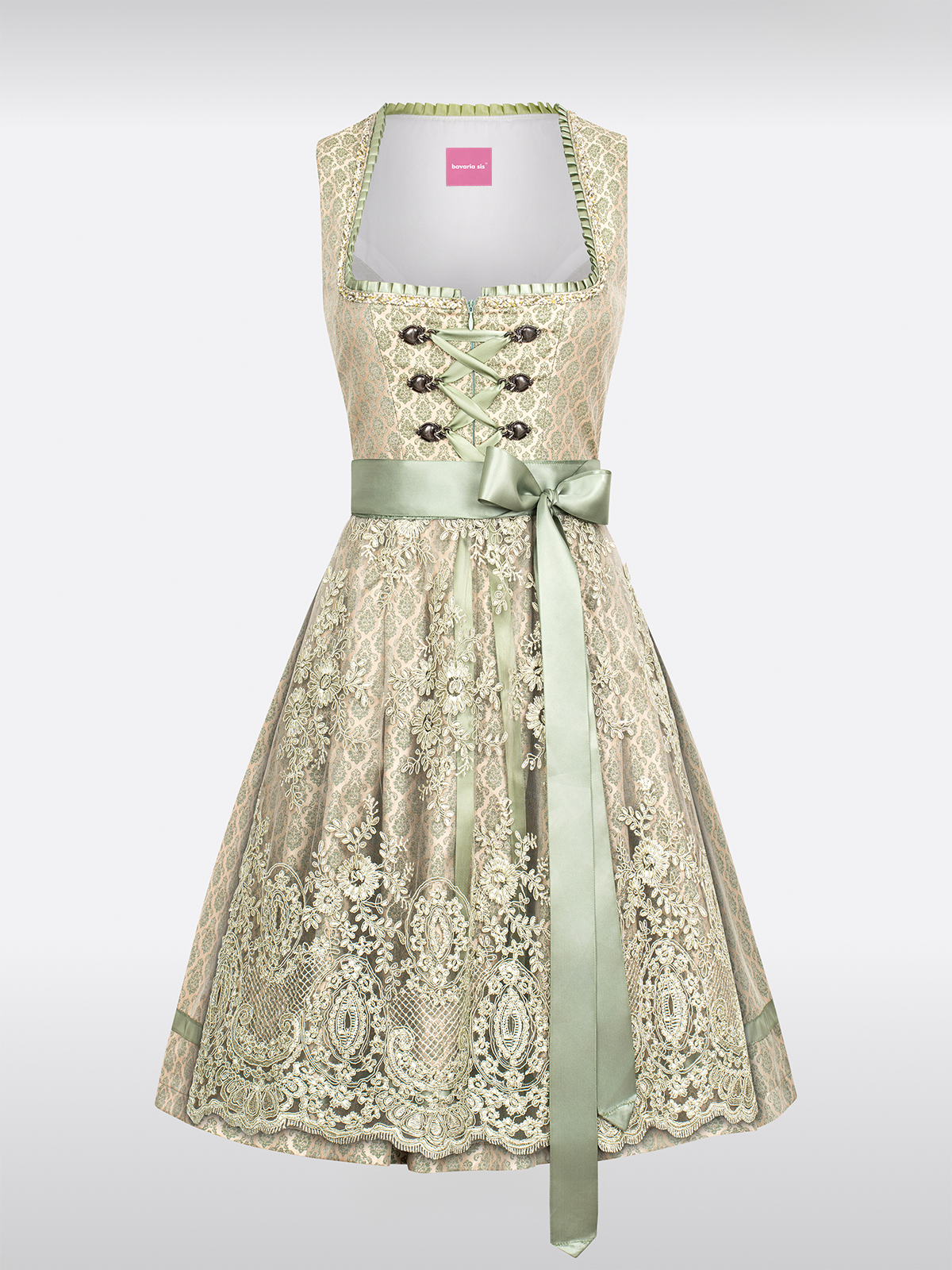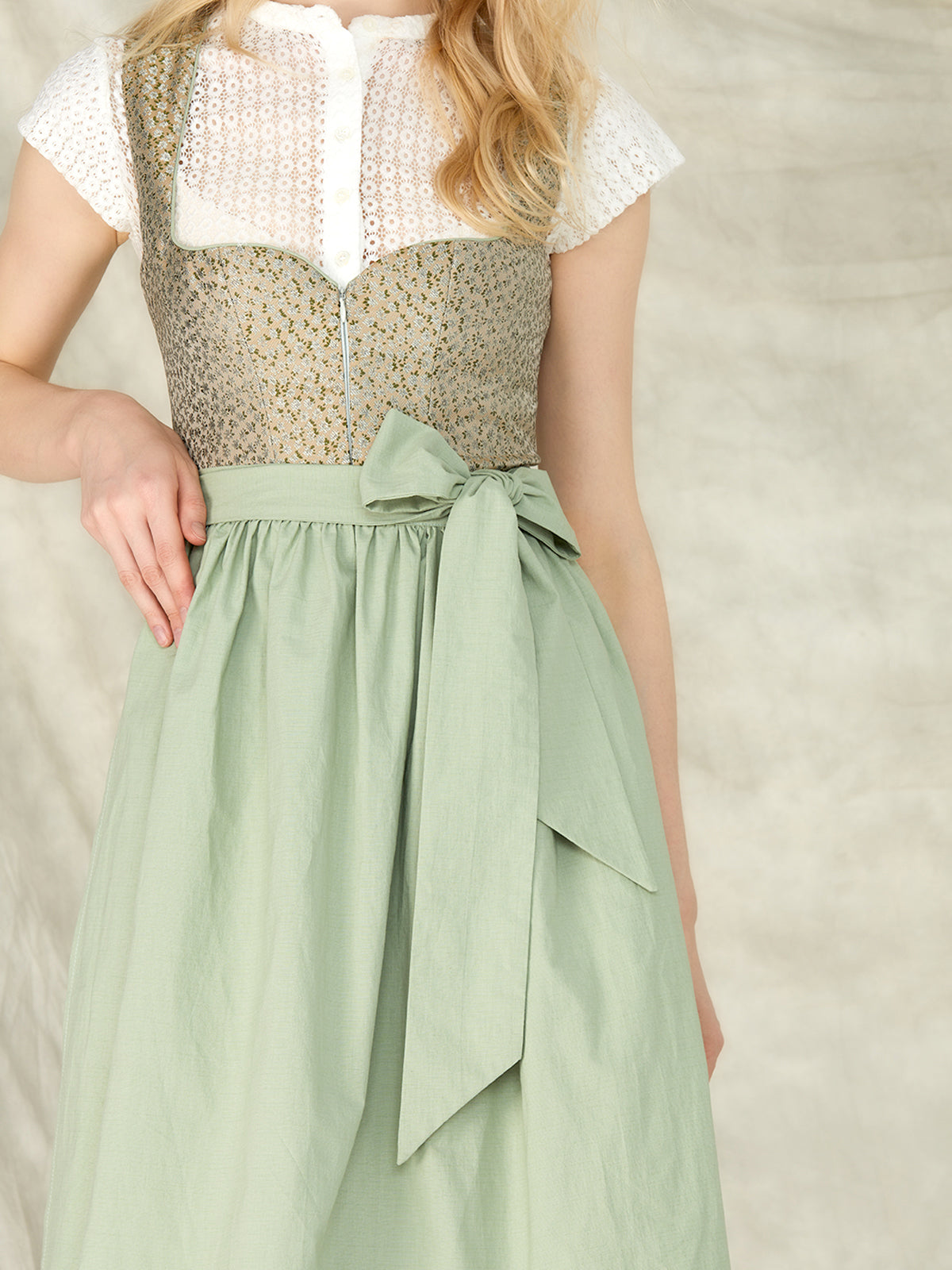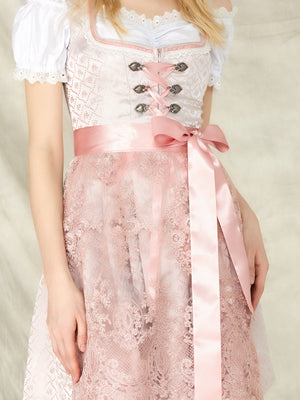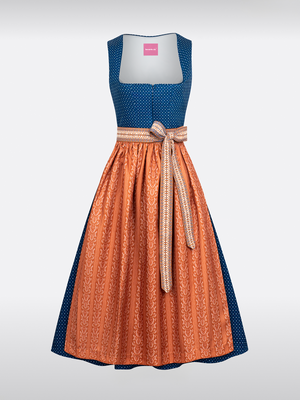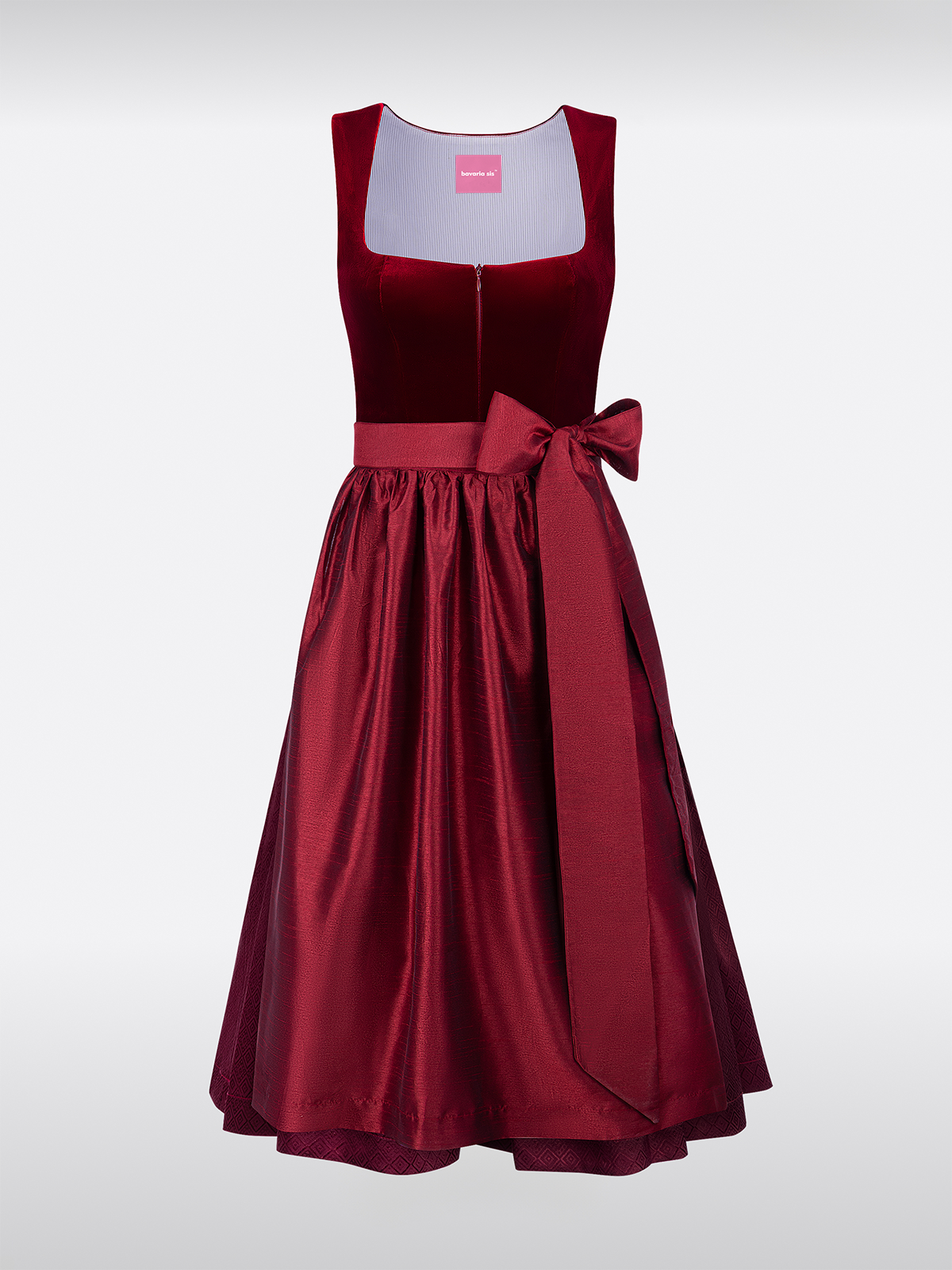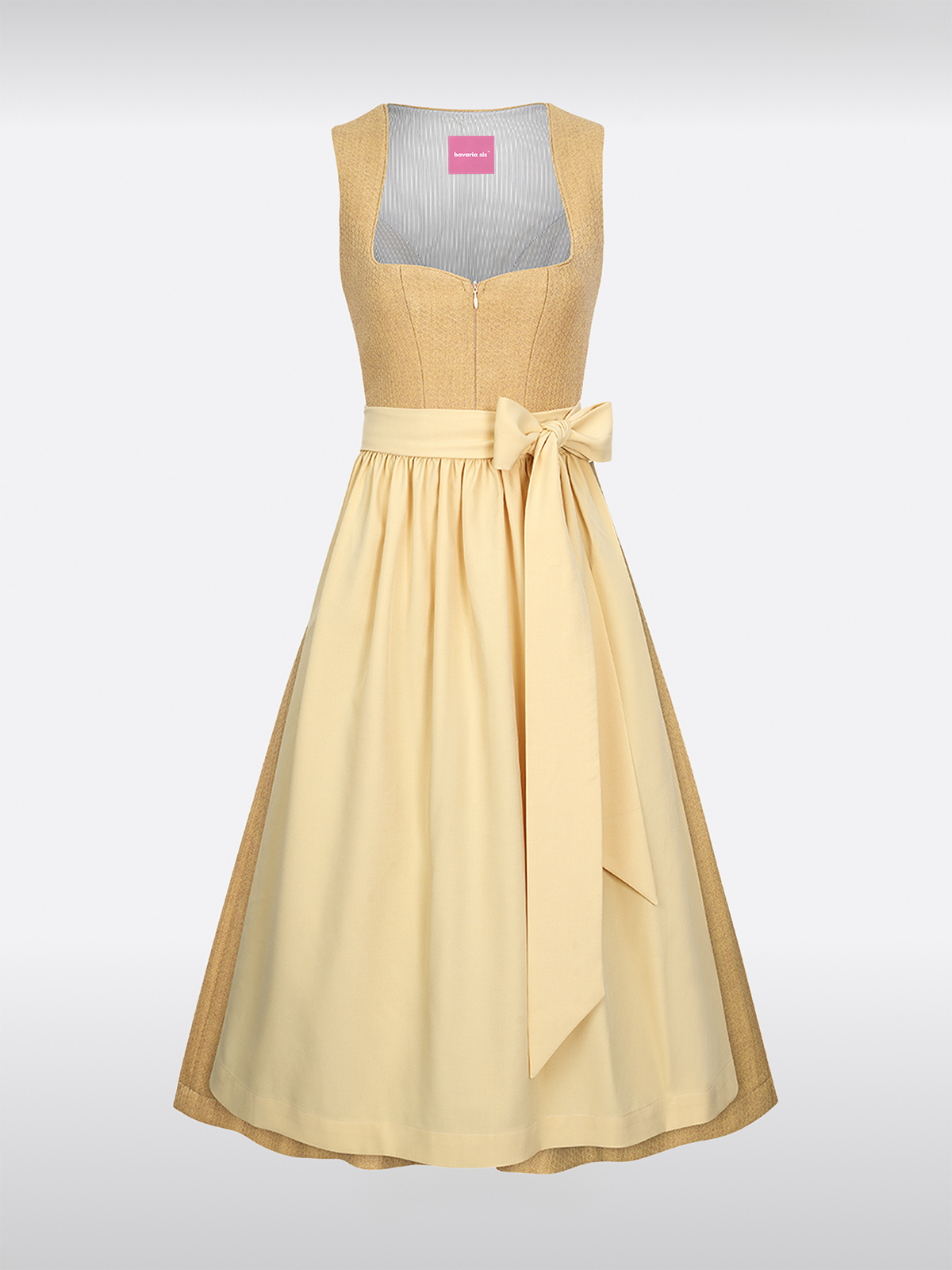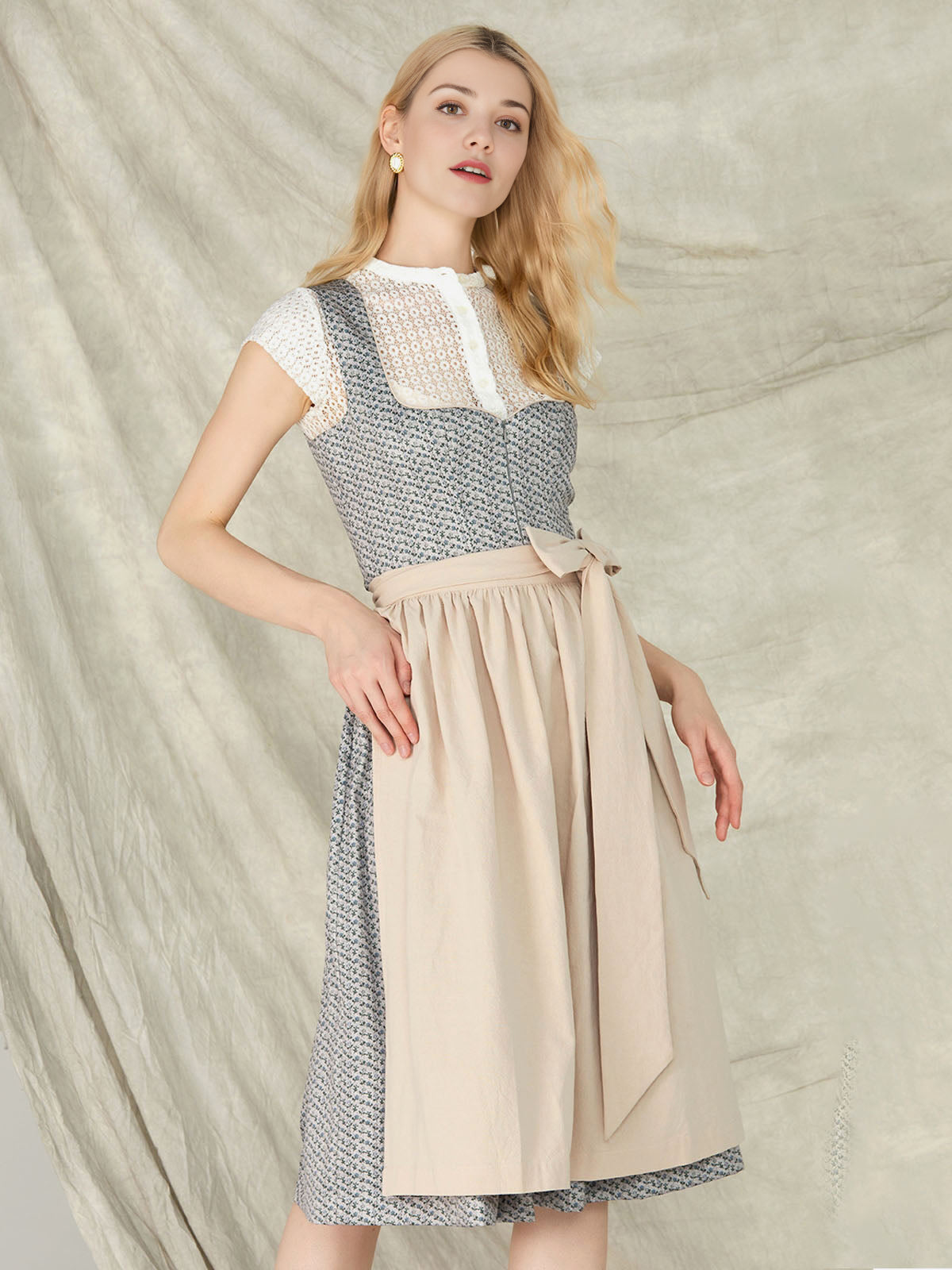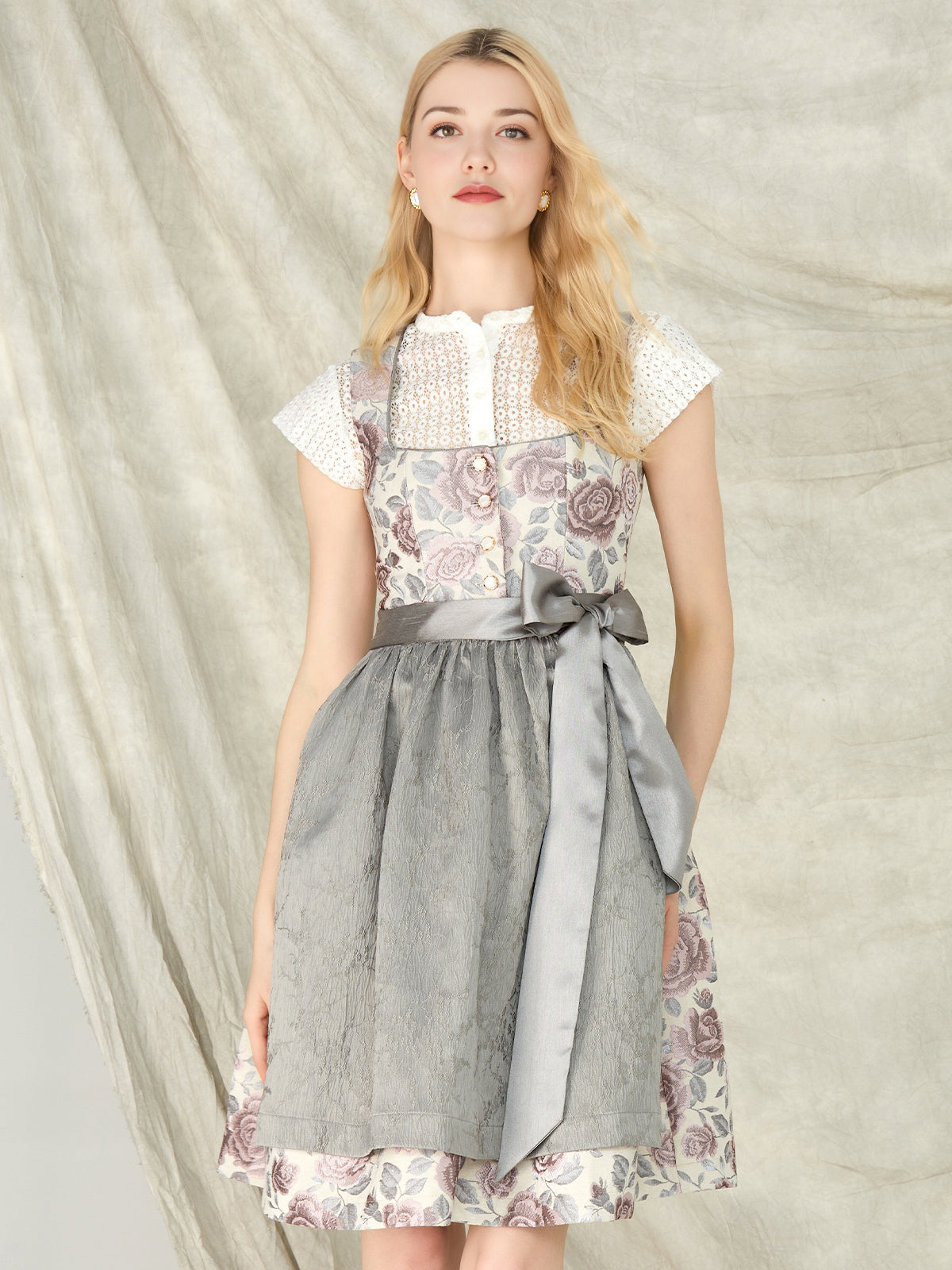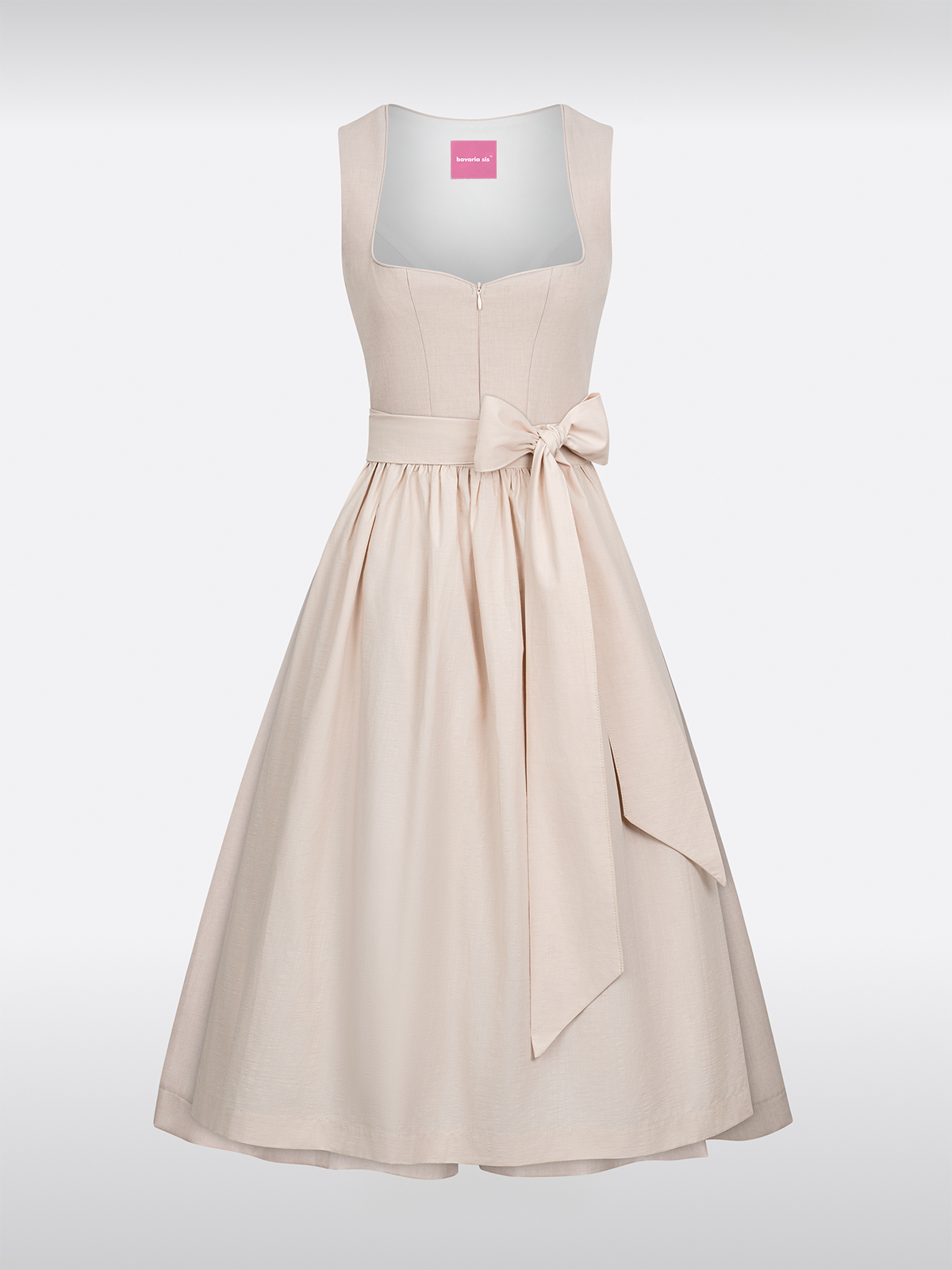The Oktoberfest in Munich is a spectacle for the senses. Thousands of people flock to the Wiesn every day, and the first to catch your eye are the women in their dirndls. The vibrant shades of green—from fresh emerald to deep pine green—shimmer in the sun, while the ribbons on the back flutter like little flags in the breeze. For many tourists, it's their first direct encounter with this traditional costume: a sight that seems both nostalgic and modern, as if time and culture had merged into a single garment.
But what's behind this green wave that's conquering not only Oktoberfest but also the international fashion world? This article delves into the history, color language, and sustainable future of the dirndl—with a special focus on the green variants such as "Dirndl green," "Dirndl blouse olive green," and "Cocovero Dirndl green“.
1. From peasant costume to fashion icon: The evolution of the dirndl
The dirndl has a rich history. Originally, it was a simple work garment worn by peasant women in the 19th century—a sturdy dress made of loden or cotton that withstood the physical demands of everyday life. It consisted of a skirt, a blouse, and an apron, which was practical and functional, but hardly considered stylish.
The turning point came at the beginning of the 20th century, when the dirndl was discovered by the nobility. Aristocratic ladies adapted the garment, embellishing it with lace, pearls, and silk fabrics, and turning it into a symbol of the Bavarian lifestyle. Suddenly, the dirndl was no longer just rustic, but also elegant—a status symbol that embodied the connection between tradition and modernity.
The next milestone came in recent years, when sustainability and innovation revolutionized the fashion industry. A German designer made headlines when he combined the dirndl with eco-friendly materials like Cocovero (a sustainable viscose variant) and dared to use color innovations. His "Dirndl green" was not only a statement for ecology, but also a visual stunner: a shade of green reminiscent of the fresh meadows of the Alps, combined with an olive-green blouse that lent the outfit a profound elegance. Suddenly, the dirndl no longer represented just the past, but also the future.
2. The color green: More than just a trendy color
Green is more than just a seasonal color in fashion. It symbolizes nature, growth, and harmony—values that are becoming increasingly important, especially in a digitalized world. In the context of the dirndl, however, green takes on another meaning: It bridges the gap between tradition and modernity, between country and city.
a) Dirndl green: The classic statement
The classic "Dirndl Green" is an emerald shade that draws the eye like a magnet. It's a perfect match for light skin tones, which shine with the bold color contrast. For darker skin tones, however, a deeper pine green is recommended, which gently envelops the skin tone. A color chart shows:
- Emerald green: Ideal for summer and spring types with fair skin and blue or green eyes.
- Pine green: Flutters in autumn and winter types with dark skin and brown eyes.
- olive green: A universal color that suits all skin types and represents a modern interpretation of the traditional.
b) Dirndl blouse olive green: The subtle elegance
The blouse is the centerpiece of the dirndl outfit. An olive green blouse adds a modern touch to the classic green dirndl without losing its traditional feel.It looks particularly elegant when made of silk or cotton satin and features fine details such as lace collars or mother-of-pearl buttons.
c) Cocovero Dirndl green: Sustainability meets style
The Cocovero green dirndl is a recent innovation. Cocovero is a material made from sustainably sourced cellulose fibers and is characterized by its soft, smooth surface. The fabric feels like silk, but is significantly easier to care for and more environmentally friendly.
3. Styling tips: How to wear the dirndl stylishly
The dirndl isn't just for Oktoberfest—it can also shine in other scenarios. Here are three styling suggestions for different occasions:
a) Oktoberfest look: Classic with a twist
- Dirndl green with a white lace blouse and black leather shoes.
- accessories: Dirndl apron in gold tone, filigree earrings and a beer mug bracelet.
- Tips: Choose an apron with subtle floral patterns to avoid overdoing the outfit.
b) Wedding look: Romantic and elegant
- Dirndl in pine green with a white silk blouse and silver jewelry.
- accessories: A slow pearl necklace, a lace veil and beige pumps.
- Tips: Avoid too many colors – let the green be the focus.
c) Everyday look: modern and casual
- Dirndl blouse olive green combined with a denim skirt and white sneakers.
- accessories: A casual leather jacket and a large knitted scarf.
- Tips: Wear the blouse loosely over the skirt for a casual look.
4. Sensory experiences: The dirndl as a multisensory work of art
The dirndl is more than just a piece of clothing – it is a sensory experience.
a) Tastillusion: The feeling of nature
Touch the folds of a cotton dirndl—the texture is rough and natural, like a field of wheat in the wind. A cocovero dirndl, on the other hand, feels smooth and cool, like a mountain stream in summer.
b) Fragrance experience: The connection between costume and environment
In a beer tent hall, the wind swirls the dirndl aprons, and the fabrics whirl through the air, carrying the scents of hops and malt. It's a scent that evokes summer, festivity, and community—and that makes the dirndl a living cultural asset.
5. Tradition vs. Innovation: Handcraft or 3D printing?
The dirndl is facing a turning point: How can tradition blend with modernity without losing its authenticity? One example is the apron: While classic dirndls are often decorated with hand-stitched floral embroidery, modern designers are experimenting with 3D printing technologies to create complex patterns.
Question for you:
What's your opinion on this development? Do you prefer the craftsmanship of traditional embroidery or the modern precision of 3D printing?
Share your opinion!
Upload your favorite dirndl outfit and show us how you combine tradition and style. We look forward to seeing your creations!

